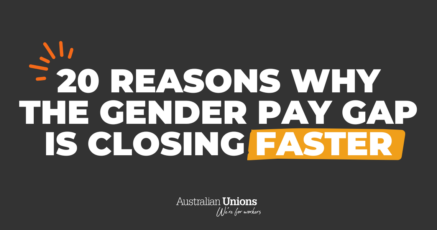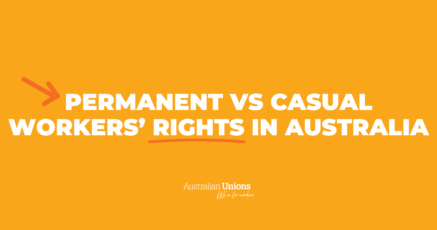You don’t have to spend much time online as a woman to see how sexist some digital spaces can be.
A report from the Media, Entertainment and Arts Alliance (MEAA) states that more than a third of women journalists have experienced online harassment, trolling and stalking while doing their job. But only 15 per cent are aware of a workplace policy to address such online abuse.
Support is always available
-
Call 000 if you, a child, or another person is in immediate danger.
-
1800RESPECT: Call 1800 737 732 if you or someone you know is impacted by sexual assault, domestic or family violence.
-
No to Violence Men’s Referral Service: Call 1300 766 491 for anonymous and confidential telephone counselling, information and referrals for men.
-
Kids Helpline: Call 1800 55 1800 for 24/7 counselling for Australian children and young people.
-
Q Life: Call 1800 184 527 for anonymous and free LGBTQIA+ peer support and referral.
Bricks and mortar newsrooms are archaic in the digital age: today, a journalist’s workplace is multi-platform. In order to be engaged with audiences, ‘being online’ hardly feels optional to media professionals – this is the main forum where their work is consumed. For this reason, most have an online presence, but in many cases these hybrid personal/professional social media profiles are managed by the individual, not the company.
This stirs a number of problems in the lives of communications professionals, such as an inability to disconnect from work, an increasingly blurred line between personal and professional identities and – overwhelmingly for women over men – making them vulnerable to gender-based online harassment and abuse.
While it’s true that journalists should be held accountable for the work they produce – which is made for public consumption – there is a clear difference between fair critique and personal harassment and abuse.
ABC’s Leigh Sales states that while criticism and push-back is considered ‘normal’ in political journalism, bullying on social media is different as it comes “at a furious pace” and is a place where “all the women face sexual insults and there is a corresponding pattern of racism for reporters of colour.”
Amongst a string of prominent female journalists leaving their jobs alongside Sales, The Project’s Lisa Wilkinson has just the other week followed suit. Wilkinson, responsible for breaking the Brittany Higgins and Bruce Lehrmann alleged sexual assault story, cites “relentless, targeted media toxicity” as her reason for quitting.
What is the impact of online abuse on women journalists?
The effects of this abuse are multi-dimensional, with women fearing for their safety, feeling isolated and experiencing anxiety, depression and loss of self-esteem.
According to MEAA’s report, women who must navigate multiple oppressions as a result of their race, sexuality, class, disability or because they are transgender are even more at risk of online abuse, and their experiences of gender-based harassment are intensified by these aspects of identity.
The fear of these repercussions hinders women journalists’ professional growth, as they feel the need to self-censor by avoiding ‘being bold’ or covering controversial issues, as it places them in the firing line of online attack. Such ‘bravery’ is afforded to men in the industry who are less vulnerable to this type of online gender-based abuse and bullying, opening them up to more accolades.
How to combat online abuse towards women journalists
Simply deactivating social media accounts isn’t a solution. As Sales points out, platforms like Twitter are an important tool in a journalist’s kit for breaking news and promoting important issues, and even those without social media platforms are not shielded from this abuse.
Ultimately, journalists are workers and the media is their job – they deserve to feel safe at work as everyone else does.
Journalists can’t simply avoid online spaces, as the digital realm is an extension of their workplace – the responsibility to protect them from online abuse and harassment belongs to employers.
Women journalists are key in holding power to account and drawing public attention to issues of sexual harassment and abuse against women – like Wilkinson’s work sharing Brittany Higgins’ story. They have an important role to play in the fight against gender-based abuse and inequality: we need them to be able to continue their work, and to feel safe while they do.
Union members know this, which is why they have made fighting gender-based violence a core priority. Pushing the government to pass the Respect@Work Bill has been a monumental win in this fight, by placing positive duties on employers to protect workers from gender-based violence and harassment.
Unions are leading the charge to ensure employers widen the safety net to protect women from abuse – across all the platforms they must traverse in order to perform their jobs.
At the end of the day, workers are people first. That’s why union members stand together for better workplace conditions and protected workers’ rights.
Cover photo credit: Vanilla Bear Films on Unsplash






SHARE:
“Don’t read the comments”: women journalists harassed out of a job